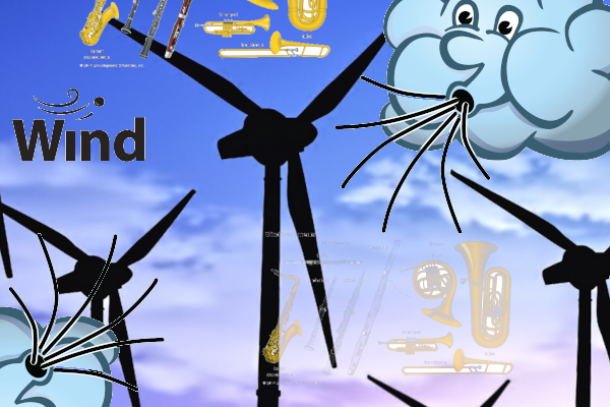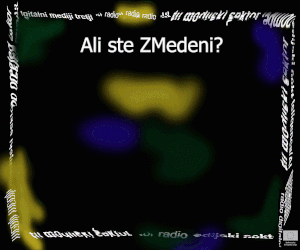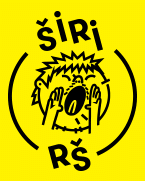the WIND the WIND the WIND the WIND the
The force of the wind can dramatically change the perception of a scene.
The contrast between a gentle breeze and a violent gale is not just a measure of intensity.
But can also signify changing moods, symbolize emotional shifts, or foreshadow significant events.
Here is how to do it:
Gentle: A gentle wind softly touches, a delicate interaction with the environment. Example: “The gentle wind caressed the petals of the blooming flowers, their fragrance subtly wafting in the air.”
Light: A light breeze is almost playful, just strong enough to stir the leaves. Example: “A light wind tugged at her hair as she sat by the river, the tranquil scene filling her with peace.”
Calm: A calm wind denotes tranquility and serenity, ideal for peaceful settings. Example: “The calm wind moved lazily through the tall grass, making it sway like waves in a calm
Top Answerer
As a general rule, wind around a high-pressure system flows clockwise and around a low-pressure weather system flows anti-clockwise. If the wind is at your back, the "high" pressure is generally to your right.
Not Helpful 5Helpful 1
Ask a Questio
Whistling: A whistling wind creates high-pitched sounds as it passes through narrow spaces. Example: “The wind whistled through the bare branches, a lonely melody in the frigid winter air.”
Moaning: A moaning wind can suggest discomfort or eeriness. Example: “The wind moaned through the ruined tower, its ghostly sighs stirring tales of lost battles and ancient sorrows.”
Describing Wind by Its Speed
The speed of the wind can influence the rhythm and pacing of your writing.
Slow winds might suggest a leisurely pace, while fast winds can bring energy and excitement.
Slow: A slow wind suggests a relaxed or languid mood. Example: “The slow wind moved lazily across the field, the daisies bending and swaying in a slow dance.”
Lazy: A lazy wind has a lackadaisical quality, perfect for a calm, sunny afternoon. Example: “A lazy wind drifted through the orchard, the scent of ripe apples carried in its wake.”
Languid: A languid wind is slow and relaxed, hinting at tranquility and leisure. Example: “The languid breeze that wafted from the sea brought a sense of calm and serenity.”
Meandering: A meandering wind takes its time, as though it’s enjoying the journey rather than rushing towards a destination. Example: “The meandering wind played amidst the autumn leaves, carrying them on a leisurely dance.”
Drifting: A drifting wind is unhurried and aimless, adding a dreamlike quality to the scene. Example: “The drifting wind carried the scent of lilacs, its sweet perfume invoking memories of past summers.”
Fast: A fast wind is full of energy, ideal for scenes of action or urgency. Example: “The fast wind whipped her hair around her face as she raced down the hill.”
Quick: A quick wind might signal an abrupt change or a breathless moment. Example: “The quick wind brought the first hint of the storm, the air suddenly heavy with tension.”
Can you predict wind direction?
Nitzan Levy
Nitzan Levy
Sailing Instructor
Expert Answer
Sometimes, but it really depends on where you are. Checking the weather report ahead of time definitely helps, but there are other factors you need to consider. For instance, the New York Harbor has an unpredictable wind direction thanks to all of the surrounding buildings.
Not Helpful 2Helpful 1
n
What is your question?
Submit
Tips
You can also hold a lighter or match up in a light breeze and observe the flame. The flame will blow in the direction that the wind is blowing. Do not do this on a very windy or breezy day, as the wind could cause sparks to travel and start a fire.
Caressing: A caressing wind moves gently, like a lover’s touch. Example: “The caressing wind played with her hair, sending shivers down her spine.”
Tugging: A tugging wind pulls at things, providing a sense of its strength. Example: “The tugging wind pulled at his hat, threatening to send it flying.”
Stirring: A stirring wind causes slight movement, especially in water or loose particles like sand or dust. Example: “The stirring wind created tiny ripples across the pond, disturbing the otherwise mirror-like surface.”
Sweeping: A sweeping wind suggests broad, fast movement over a large area. Example: “The sweeping wind cleared the fog, revealing the breathtaking vista of the valley below.”
Roaring: A roaring wind gives an impression of intensity and might. Example: “The roaring wind stripped the trees of their autumn leaves, leaving the branches bare and exposed.”
Dancing: A dancing wind moves unpredictably, swirling and changing direction. Example: “The dancing wind swirled the snowflakes into intricate patterns, as if orchestrating a ballet of the elements.”
Carrying: A carrying wind can transport scents, sounds, or smaller objects over distances. Example: “The carrying wind brought the distant sound of church bells, drifting on the air like a sacred melody.”
Buffeting: A buffeting wind strikes repeatedly and forcefully, causing everything in its path to shake or rattle. Example: “The buffeting wind rattled the old window frames, their constant clattering a testament to the storm’s fury.”
Describing Wind by Its Direction
The direction of the wind can have significant implications for your narrative, from determining the movement of clouds to hinting at changes in weather or seasons.
Here is how to describe the wind by its direction:
North: A north wind, often cold, can signify the arrival of winter or a cooling trend. Example: “The north wind carried the scent of snow, a chilling harbinger of the approaching winter.”
South: A south wind is typically warm, often suggesting the onset of spring or summer. Example: “The south wind, laden with the heady fragrance of blooming roses, heralded the arrival of a sultry summer.”
East: An east wind can be seen as bringing change or new beginnings. Example: “The east wind brought the first light of dawn, casting long shadows on the silent town.”
West: A west wind often carries the connotation of ending or closure. Example: “The west wind carried the last notes of the song, echoing the sun’s farewell as it dipped below the horizon.”
Upland: An upland wind moves uphill, suggesting effort or challenge. Example: “The upland wind whispered encouraging words in her ear as she climbed the steep hill.”
Downland: A downland wind moves downhill, hinting at ease or relaxation. Example: “The downland wind guided the fallen leaves on their journey to the valley.”
Seaward: A seaward wind moves towards the sea, often evoking a sense of longing or adventure. Example: “The seaward wind filled their sails, drawing them towards the vast, unexplored ocean.”
Landward: A landward wind moves towards land, typically associated with feelings of safety or return. Example: “The landward wind carried the familiar scent of pine and woodsmoke, a promise of home.”
Incoming: An incoming wind moves towards the observer, indicating the approach of something. Example: “The incoming wind carried the distant rumble of thunder, a stark warning of the storm’s approach.”
Outgoing: An outgoing wind moves away from the observer, often signaling departure or relief. Example: “The outgoing wind took the last traces of the forest fire, the air finally clear and breathable.”
Describing Wind by Its Time of Day
The time of day can also influence how the wind is perceived, adding an additional layer of nuance to your descriptions.
Morning: A morning wind suggests freshness and the beginning of a new day. Example: “The morning wind, cool and crisp, breathed life into the sleepy town.”
Noon: A noon wind often conveys the intensity of the midday sun. Example: “The noon wind, hot and dry, made the mirages dance on the distant horizon.”
Afternoon: An afternoon wind can signal a gradual easing of the day’s heat. Example: “The afternoon wind brought welcome relief, stirring the lethargic summer air.”
Evening: An evening wind often indicates the transition from day to night. Example: “The evening wind carried the twilight song of the birds, an enchanting serenade as day gave way to night.”
Night: A night wind is typically associated with mystery, calm, or the unknown. Example: “The night wind whispered tales of forgotten times, its hushed voice blending with the rustle of the ancient trees.”
Dawn: A dawn wind implies new beginnings or hope. Example: “The dawn wind stirred the sea into a shimmering canvas, painting the first light of day in vibrant hues of orange and gold.”
Dusk: A dusk wind carries the end of the day and the onset of the evening. Example: “The dusk wind rustled the falling leaves, echoing the sun’s farewell as it dipped below the horizon.”
Midnight: A midnight wind can evoke the depth of the night and the mysteries it holds. Example: “The midnight wind carried the eerie howls from the distance, its chilling message clear in the silent night.”
Daybreak: A daybreak wind suggests renewal or a fresh start. Example: “The daybreak wind carried the scent of dew-kissed grass, a subtle hint of the world awakening to a new day.”
Twilight: A twilight wind signifies transition or change, often bringing a sense of calm. Example: “The twilight wind stirred the lavender fields, their soothing scent bringing a serene end to the day.”
Describing Wind by Its Smell
Scents carried by the wind can help set the scene and evoke strong emotions and memories in your readers.
Here are a few ways you can describe wind by its smell:
Salt-tinged: A wind that carries the smell of the sea. Example: “A salt-tinged wind swept across the deck, instantly transporting him back to his childhood summers by the ocean.”
Pine-scented: A wind carrying the aroma of pine forests. ves, filling the afternoon with a tangy sweetness.”
Decaying: A wind that carries the smell of decay, indicating rot or death. Example: “The decaying wind held the grim scent of the battlefield, a chilling testament to the day’s losses.”
Spicy: A wind filled with the scent of spices, indicating a nearby marketplace or kitchen. Example: “The spicy wind was thick with the promise of delicious meals, making her stomach growl in anticipation.”
Describing Wind by Its Feeling
Describing the wind by its physical sensation on a character’s skin can help immerse the reader in the scene.
Stinging: A wind that is harsh and biting. Example: “The stinging wind battered his face, each gust like a slap of cold, wet canvas.”
Tickling: A light wind that playfully brushes against the skin. Example: “The tickling wind teased her bare arms, leaving goosebumps in its wake.”
Caressing: A gentle wind that softly touches the skin. Example: “The caressing wind
sea.”
Whispering: A whispering wind is quiet, giving a sense of intimacy and closeness. Example: “The whispering wind carried the melody of the distant lullaby, lulling the town to sleep.”
Soothing: A soothing wind provides relief or comfort. Example: “The soothing wind was a balm against the harsh summer heat, its gentle caress reviving his spirits.”
Blustery: A blustery wind is strong and cold, often associated with the autumn and winter months. Example: “The blustery wind cut through his jacket, making him shiver as he trod the leaf-strewn path.”
Howling: A howling wind is fierce, invoking images of storms or tempests. Example: “The howling wind made the old house creak ominously, its eerie tune setting the mood for the night.”
Fierce: A fierce wind indicates a wild and uncontrolled force. Example: “The fierce wind shook the window panes, a testament to the storm’s power.”
Wild: Wild wind suggests a sense of chaos and lack of control. Example: “The wild wind tossed the ship like a toy, waves crashing over the deck.”
Gusty: Gusty winds are strong and sudden, capable of causing brief moments of disarray. Example: “The gusty wind snatched the papers from his hands, scattering them in every direction.”
Describing Wind by Its Sound
The sound of the wind is often used to set the atmosphere of a scene.
From the silent rustling of leaves to the ominous howling in a storm, the sonic quality of wind can bring your writing to life.
Soft: A soft wind might be barely audible, adding a sense of tranquility. Example: “The soft rustle of the wind through the trees was a soothing backdrop to their quiet conversation.”
Hushed: A hushed wind is a secret whisper, barely noticeable. Example: “A hushed breeze stirred the silent forest, the only sign of life in the deep wilderness.”
Silent: A silent wind might not ma
Knowing wind direction, or the direction that the wind is blowing from, can be imperative in several instances. For example, if you are sailing, flying a kite, or deciding where to place a windmill, the wind direction will be your most important piece of information. Luckily, there are several ways to determine wind direction. You can feel the wind, watch as it moves a body of water, or use specialized equipment to observe its direction.
Method
1
Feeling the Wind
Download Article
Step 1 Wet your finger.
1
Wet your finger. Stick your index finger down in water to get it wet. Hold your finger up and away from your body. The side of your finger that gets cool is the side that the wind is blowing from.[1]
If you put your finger in your mouth to get it wet (which works well when there is no water nearby), be sure that you get it wet all the way around.
Closing your eyes eliminates the visual messages coming to your brain and allows you to focus fully on your other senses. This way, you will be able to concentrate on feeling the wind with your skin.[2]
Step 2 Turn your head.
2
Turn your head. Turn to face the direction you think the wind is coming from. The skin on your face will be more sensitive to a light wind than somewhere like your hands. Keep turning until you feel that you are facing directly into the wind.[3]
Step 3 Listen to the wind.ke any sound, but its effects can be seen or felt. Example: “The silent wind danced with the dunes, shifting the desert landscape as if alive.”
Quiet: A quiet wind does not overpower other sounds, acting as a subtle background note. Example: “The quiet wind murmured through the leaves, a soft accompaniment to the chorus of singing birds.”
Noisy: A noisy wind is boisterous, drawing attention to its presence. Example: “The noisy wind rustled the newspapers, alerting the alley cat of someone’s approach.”
Roaring: A roaring wind has a deep, loud sound, often associated with storms or extreme weather. Example: “The roaring wind was deafening, drowning out all other sounds.”
Screaming: A screaming wind gives the impression of high intensity or danger. Example: “The wind screamed around them, a chilling prelude to the approaching hurricane.”
Howling: A howling wind is loud and sorrowful, invoking a sense of loneliness or fear. Example: “The howling wind seemed to voice the loneliness of the old mansion, its chilling song echoing in the empty rooms.”
Question
How to know clockwise and anti-clockwise wind directions?
Upnorth Here
Upnorth Herewas a tender lover, its soft touch bringing comfort to her weary body.”
Slapping: A strong, abrupt wind. Example: “The slapping wind caught her off guard, its sudden force nearly knocking her off her feet.”
Grazing: A gentle wind barely noticeable on the skin. Example: “The grazing wind was a soft sigh against her cheek, a barely-there touch that hinted at the storm’s retreat.”
Biting: A cold, harsh wind that feels as though it’s biting into the skin. Example: “The biting wind gnawed at his fingertips, the relentless cold seeping through his gloves.”
Scratching: A wind carrying sand or tiny debris that feels abrasive on the skin. Example: “The scratching wind was a desert beast, its sandy claws scraping against his exposed skin.”
Soothing: A wind that brings relief or comfort. Example: “The soothing wind was a welcome respite from the
Swift: A swift wind brings movement and flow to the scene, emphasizing speed and motion. Example: “The swift wind carried the fallen petals, creating a blizzard of cherry blossoms.”
Rushing: A rushing wind suggests urgency or turmoil. Example: “The rushing wind tore through the narrow streets, a harbinger of the tempest to come.”
Speeding: A speeding wind signifies rapid movement and can be used to convey a sense of excitement or danger. Example: “The speeding wind roared in his ears as he plummeted towards the ground, his parachute trailing behind him.”
Describing Wind by Its Temperature
The temperature of the wind can greatly influence the overall feeling of a scene.
Whether a warm summer breeze or a frigid winter gust, the wind’s temperature can evoke a range of emotions and sensations in the reader.
Warm: A warm wind suggests comfort and the promise of balmy weather. Example: “The warm wind, heavy with the scent of blooming jasmine, hinted at the approaching summer.”
Hot: A hot wind can be oppressive, often associated with desert or drought conditions. Example: “The hot wind carried the sting of the sand, searing any exposed skin.”
Cool: A cool wind is often refreshing, a welcome relief from the heat. Example: “The cool wind that rustled the: “The frigid wind howled across the snow-covered mountains, stinging any exposed skin.”
Scorching: A scorching wind is intensely hot, like being in an oven or near a fire. Example: “The scorching wind was like a wall of heat, making the mere act of breathing a challenge.”
Refreshing: A refreshing wind is cool and invigorating, often associated with spring or morning breezes. Example: “The refreshing wind stirred the wildflowers, carrying their sweet scent across the meadow.”
Biting: A biting wind is harsh and painful, carrying an insinuation of discomfort or hostility. Example: “The biting wind whipped around them, making every step a battle against the elements.”
Describing Wind by Its Effects
Another way to describe the wind is by the impact it has on the surrounding environment.
This can provide a vivid, indirect way of conveying the strength or character of the wind.
Rustling: A rustling wind gently stirs leaves and grass. Example: “The rustling wind stirred up the autumn leaves, creating a colorful whirlwind.”
Whipping: A whipping wind moves with force, capable of causing disarray. Example: “The whipping wind tore at their clothes, making it hard to move forward.”
How to Determine Wind Direction3
Listen to the wind. If you are facing directly into the wind, it should sound the same in both ears. You can turn your head left to right and listen to the wind. Keep repositioning your body until the wind sounds the same in both sides.[4] [5]
Method
2
Watching Water
Download Article
Step 1 Watch the ripples.
1
Watch the ripples. Look for a dark pool of water. Watch how the ripples flow over the water. These ripples are formed by the wind pushing the water and breaking its surface. The ripples will flow in the direction of the wind.[6]
If you're not near a large body of water, put out a pan or bucket of water. You should still able to see the wind rippling on the surface.
Step 2 Look out to a horizontal plane.
2
Look out to a horizontal plane. As you are looking out over the water, find a horizontal (left to right) stretch of water that is roughly 15 yards (14 m) wide. Observing the direction of this strip is a more accurate representation of wind direction than watching individual ripples. The strip will travel the same direction that the wind is blowing.[7]
Step 3 Determine wind patterns by watching the water from a boat.
3
Determine wind patterns by watching the water from a boat. When detecting subtle variations in wind direction, such as on a sailboat, you should be looking forward and back. Watch how the wind is affecting the water in front of you by focusing on a horizontal stretch of ripples in front of you. Also, glance back behind you to see how the wind is beha
Example: “The pine-scented wind was a refreshing balm, cleaning the city smog from her lungs.”
Smoky: A wind that carries the smell of smoke, indicating a fire. Example: “The smoky wind stung their eyes and throats, a cruel herald of the approaching wildfire.”
Floral: A wind filled with the scent of flowers. Example: “A floral wind drifted through the open window, the intoxicating perfume of the garden mingling with the crisp linen sheets.”
Dusty: A wind that carries the smell of dust or dry earth. Example: “The dusty wind was a tangible reminder of the long, parched summer.”
Rain-soaked: A wind carrying the fresh smell of rain or an approaching storm. Example: “The rain-soaked wind promised a respite from the relentless heat.”
Herb-laden: A wind filled with the smell of herbs, indicating a nearby garden or meadow. Example: “The herb-laden wind carried notes of lavender and rosemary, a comforting reminder of home.”
Citrusy: A wind carrying the zesty aroma of citrus fruits. Example: “A citrusy wind drifted from the orange groving there. This allows you to observe changes in the wind directly rather than waiting for your boat to react.[8]
Whether you are looking forward or back, you will use the same technique of identifying a horizontal stretch and observing the ripples.
Method
3
Utilizing Wind DevicesDownload Article
Step 1 Tie tassels to an object.
1
Tie tassels to an object. Perhaps the simplest of all wind monitoring devices is a tassel or piece of string. Tie a lightweight string or tassel to an object and let it dangle. As the wind blows, the string or tassel will blow right along with it. The wind is blowing in the direction that the tassel points.[9]
Step 2 Make an anemometer.
2
Make an anemometer. You can make devices, such as an anemometer, to measure wind direction. These can be simple homemade devices, or complex precision tools. Either way, the anemometer cups the wind and spins, indicating both the direction and intensity of the wind.[10]
Step 3 Hang a wind sock.
3
Hang a wind sock. A wind sock is a device that has one large opening attached to a pole or base. The opening on the other end is much narrower. As the wind blows through the sock, it will turn to point in the direction that the wind is blowing.[11]
You can also hang up flags to get a sense of where the wind is blowing.[12]e palm leaves brought momentary relief from the tropical heat.”
Cold: A cold wind might suggest discomfort or harsh weather conditions. Example: “The cold wind gnawed at their cheeks, turning them a rosy pink.”
Chilling: A chilling wind often connotes something ominous or foreboding. Example: “The chilling wind blew through the graveyard, making the mourners shiver uncontrollably.”
Icy: An icy wind is not only cold but also piercing, cutting through layers of clothing. Example: “The icy wind cut through her coat like a knife, making her shudder with cold.”
Frigid: A frigid wind can suggest extreme cold, often associated with winter or high-altitude settings. Exampl
Step 4 Install a weather vane.
4
Install a weather vane. A weather vane is designed to point directly into the wind. One side of the weather vane will be a narrow, pointed end (usually resembling the tip of an arrow). The other end is made wider to catch the wind. As the wind blows, you can see the arrow point directly into the wind. You must put the weather vane on a sturdy base or pole.[13]
A lot of boats have an arrow installed on top of the mast—this is called a Windex, and it flips in the direction that the wind is coming from.[14]
Expert Q&A
Question stifling heat, its gentle caress cooling her sunburnt skin.”
Clammy: A wind that is damp and cold. Example: “The clammy wind clung to her clothes, the damp chill seeping into her bones.”
Prickling: A wind that makes the skin tingle, often due to cold or static. Example: “The prickling wind was a ghost’s touch, its chilling caress raising goosebumps on her skin.”



























Prikaži Komentarje
Komentiraj